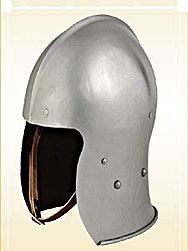 |
 |
||||
 |
|||||
Sales of theatrical clothes and disguises (jabot shirts with or without lace, cape, hats, wigs and Venetian masks, vests and old trousers) for all public, weddings, fancy dress, costumers, and public spectacles.
Also discover on our website all personal achievements, available from stock in our warehouse in Paris.
On our WEB site, you can :
- To buy by correspondence
via this WEB site
and even
CONTACT : THEATRHALL
Phone calls to France: + 33.1.43.26.64.90 (after 15h)
N° VAT Intracomm. - SIRET - APE - RIB - General Conditions of Sale
teatral teatrall teatrale teatrales téâtral
téâtrall téâtrale téâtrales
théâtral théâtrall théâtrale
théâtrales theatral theatrall theatrale
theatrales theatre hall theatre all teatrhall teatre hall
medieval, medieval helmet, accesoire medieval, armor, helmets
medieval
helmet, helmet Templar, pelvis, helmet Roman Trojan helmet,
Greek helmet, helmet Corinthian helmets, helmets Templar, pelvis,
Roman helmets, helmets trojans, helmets Greek Corinthian helmets
This helmet immediately evokes the Normans of the eleventh century,
as we
can see the Bayeux Tapestry.
Popular with people
Scandinavian since the ninth century, it persists throughout the XII.
Of
conical shape with a characteristic nasal, this helmet is composed of
four segments connected by arches outside riveted.
The Celt Helmet recent Western models are manufactured
helmet
in one piece while the eastern ones (in the area
Danube) are composed of several pieces riveted. The form is
relatively new compared to older models. It is assumed that
this type of helmet develops from the II century BC. AD and
probably continue until the end of the war of Gaul (-52). The
Stamp can also be rounded and devoid of door-comb. The edge
pleated and more ergonomic paragnathides mention of the helmet
Type simple guy.
This type of translation
could be done
through Galatians, or by mercenaries in Gallic
Greek armies.
The helmet was used by ancient warriors from all
continents. In Europe, according to its shape, he wore the de bourguignotte
nom,
cabasset, helmet, salad (often associated with a gorgerin) ... It served
to parry the blows of swords, weapons contondantes (type of weapon mass)
and
arrows.
With the arrival of firearms,
it became obsolete,
as well as the rest of armor. It reappeared during the First
World War to protect injuries caused by splinters
shells, the Germans have been equipped from the start unlike
French. Currently, the helmet is still employed by the armies of the
world
whole to protect the soldier against fragments (from grenade shells,
rocket ...) or deflecting a bullet grazing, but he was unable to arrest
hitting the ball hit, because of the penetration
rate of projectiles. Until the 1980s, the military helmet
was essentially metal. The soldiers had generally
a helmet light on which one could add the heavy helmet.
The
Modern helmets are composite materials.
The helmet protects firefighters from heat, shock (progression
blind) and falling objects (collapses). It can be combined
to a respirator insulator (ARI) to even breathe
in a smoky atmosphere or toxic. The old helmets were
Leather (USA) or metal (in France: brass and stainless steel). The
plastic helmets have spread in the 1980s.
In France there are two types of helmets for
firefighters: the helmet
F1 to urban fires: they have a nickel coating to reflect
heat, and have two visors : a visor anti-projection
(used in relief road for example), and a visor against gold
thermal radiation (the use of visors is incompatible
with the Port of ARI) and are maintained by a chin; on
can put a cover neck aluminized fabric, hung by Velcro.
the helmet F2 to forest fires is a lighter helmet, of
red (for men of rank), yellow (for sub officers)
or white (for officers), and fitted with goggles and
a jugular.
Motorcycle helmet: if you fall, the helmet
is designed to protect against
impact with the ground or natural barriers, but also to protect
from abrasion caused by the landslide on the road. It is important
to note that whatever the shock (accident, the helmet fall ,...),
must be changed. Broadly speaking, a helmet is
changes every five years. The motorcycle helmet was also a function
of
Eye protection against wind, insects ...
Equipped with a visor or not, salads offer excellent protection of the head, neck and face. Our salads Medieval are all equipped with leather interior cap and a strap loop keeping with medieval.
This lightweight helmet, origin probably Italian or French, is designed to protect a soldier on foot : archer or infantryman. On this helmet, rounded timbre forged in one piece is reinforced by a ridge. A guard neck and a banner front-complete protection. These elements are set by rivet caps decorated with decorative brass.
These rivets are designed: to fix the neck and protect the banner front timbre; to fix the internal lining of helmets, leather or cloth disappeared. In medieval times, the term "salad" applies in Western Europe (sallad in English) to two types of head protection. In the case of the helmet acquired in 1990, the word comes from the Italian "celata" - hidden, covered, from Latin CELARE - the headset is a derivative of the "pan" open. The term "salad" also applies to a type of helmet of Germanic origin (schallern - shell or bowl - probably derived from the "chapel of iron oldest).
This helmet is generally heavier and better protects the head of the fighter (the banner front often becomes a visor). It is often accompanied by a "Bavaria", protecting the chin. The word is that helmet twelfth century designer armor head. However, the helmet was used since antiquity. The Greeks already wore a helmet by recalling its helm of the Middle Ages. The Roman helmet wrapped exactly the skull and had two jugular, but leaves the face uncovered. It was sometimes topped with a comb.
The successive improvements consisted of helmets to
cover increasingly face making it difficult to identify its owner. We
think this is what gave birth to Heraldry, science shields. You can
see on the tapestry of Bayeux, William of Normandy forced to raise his
helmet to show his men that he is still alive. Towards the tenth century,
used the Headphone bevel nasal protection (1) whose origin is certainly
Norman. It was still used in some places until early thirteenth century.
From the thirteenth century, the need to better protect
the face led the creation of cylindrical helmet enveloping the entire
head with slits for the eyes (2). They had flattened the top which was
a decline because they were more vulnerable to blows on the top of the
head. These helmets were heavy and made breathing difficult which is
why they were only worn in battle. Improved techniques iron work permit
to return to a conical shape on top of the helmet while retaining full
protection of the face (mid XII). The pelvis, which appeared around
the beginning of the fourteenth century improves the comfort of the
knight. It was lower than the helm of the twelfth and equipped with
a visor can be raised thereby facilitating breathing. Its shape was
designed to deflect the blows of launches but also to better withstand
blows size worn by the masses of swords and weapons. Towards the end
of the fourteenth century, in addition to the pelvis, a new helmet is
the helmet to "head toad" (4). Its surfaces elusive allowed
to divert the blows and was widely used in games and tournaments. The
helmet disappears completely at the end of the fifteenth century replaced
by the helmet and salad. the helmet (picture above), lighter than the
helmet and pelvis, could be worn for long periods without fatigue. Salad
(5) was a kind of iron hat lying on the back of the neck, whether or
not a visor but without protection at the chin. Its form is sometimes
think of the German helmets of World War no one knew if they were inspired
them.

